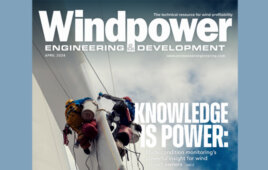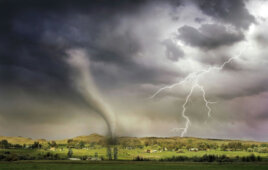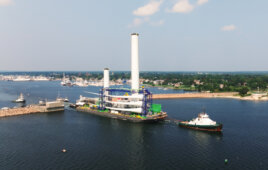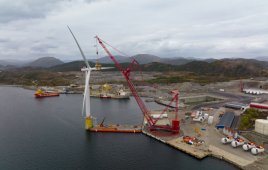Judah Moseson / Vice President, Business Development / Cooke Power Services

It’s a sad sight but it happens. Turbine fires have been traced to electrical and mechanical issues.
Wind turbines have undergone a series of transformations since their inception. Manufacturing revisions and O&M programs have addressed many concerns. However, one issue that still requires more discussion and action is fires in the wind-turbine nacelles. The root causes require attention from both turbine manufacturers and wind farm operators.
Fire and forensic investigators have researched wind-turbine nacelle fires with mixed findings. There is more than one root cause for the fires because turbines are produced by different original equipment manufacturers, OEMs.
Some turbine fires start due to electrical and mechanical root causes. Electrical root causes are mostly related to up-tower transformers, control cabinets, and power-converter systems. The electrical sources of the fires may result from arcing around cable terminations and bus connections made during the manufacturing process. Others occur because of improper operations and maintenance practices.
Most mechanical fires start by the main-shaft bearings and hydraulic brake systems, and result from overheated brakes and bearings. Overheating in the nacelle may result from a lack of proper lubrication, so a good O&M plan is essential.
To better prevent turbine fires, OEMs should redesign units to eliminate manufacturing issues contributing to electrical incidences and then provide retrofits for existing units. Lubrication requirements should also undergo review to help eliminate poor oil quality or lubricant maintenance as a root cause. Unfortunately, that is not happening across the board.

If you have had a turbine fire, read the investigators report to ensure you understand its root causes.
What can we do?
- If you have had a turbine fire, read the investigators report to ensure you understand its root causes.
- Consider the installation of a fire-suppression system to eliminate the spread of a potential future fire to limit the damage by keeping it localized. If the fire cannot be stopped from igniting, then it is at least possible to help prevent it from spreading.
- Fully understand lubrication requirements for wind turbines, and adjust O&M plans to ensure that all units are properly lubricated. This will help prevent nacelle fires and extend the life of rotating equipment.
Lastly, speak up, share preventative measures with the wind industry to potentially help others keep their turbines running safely.
Filed Under: Featured, Safety





Pl send papers on this subject